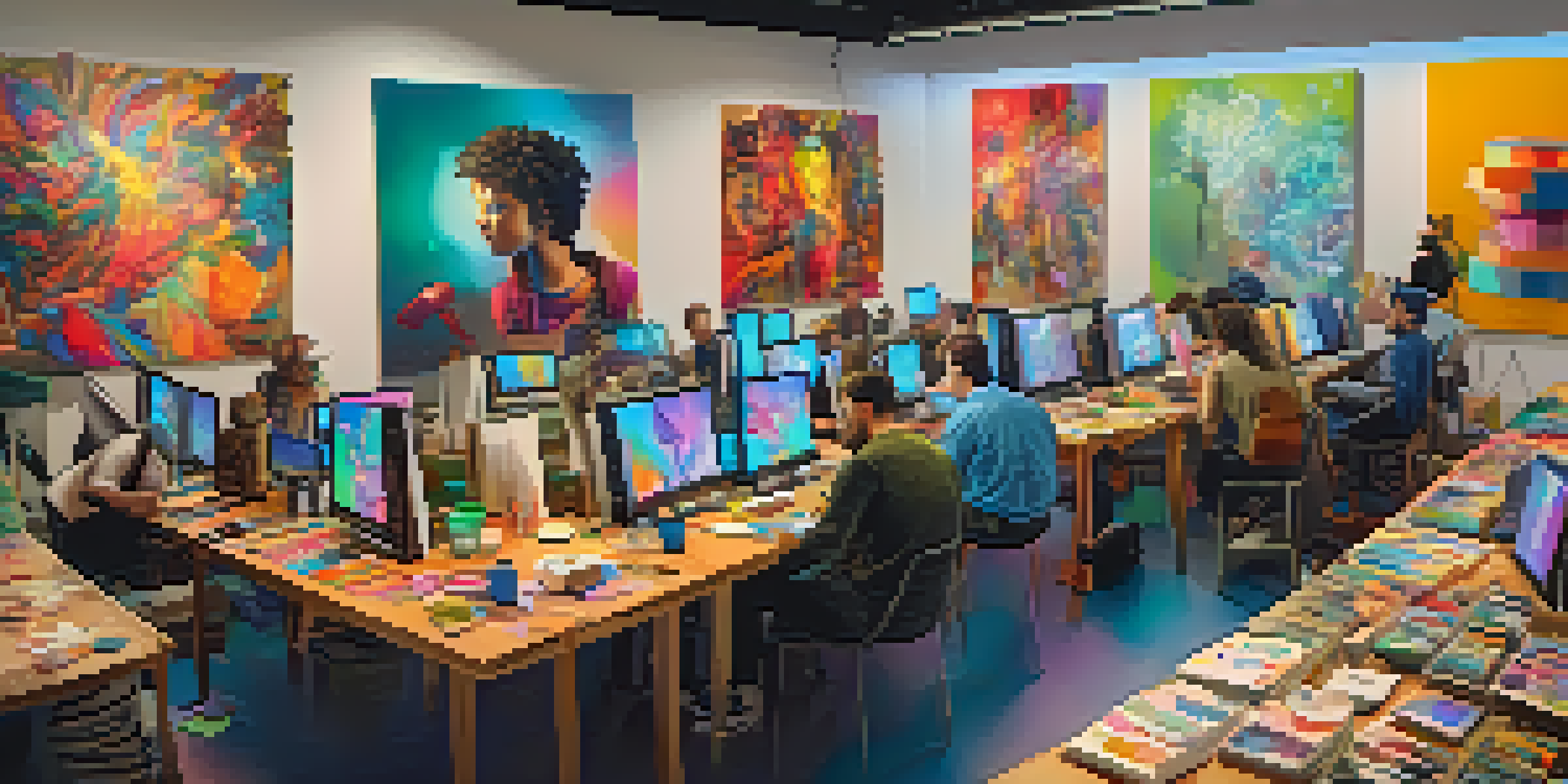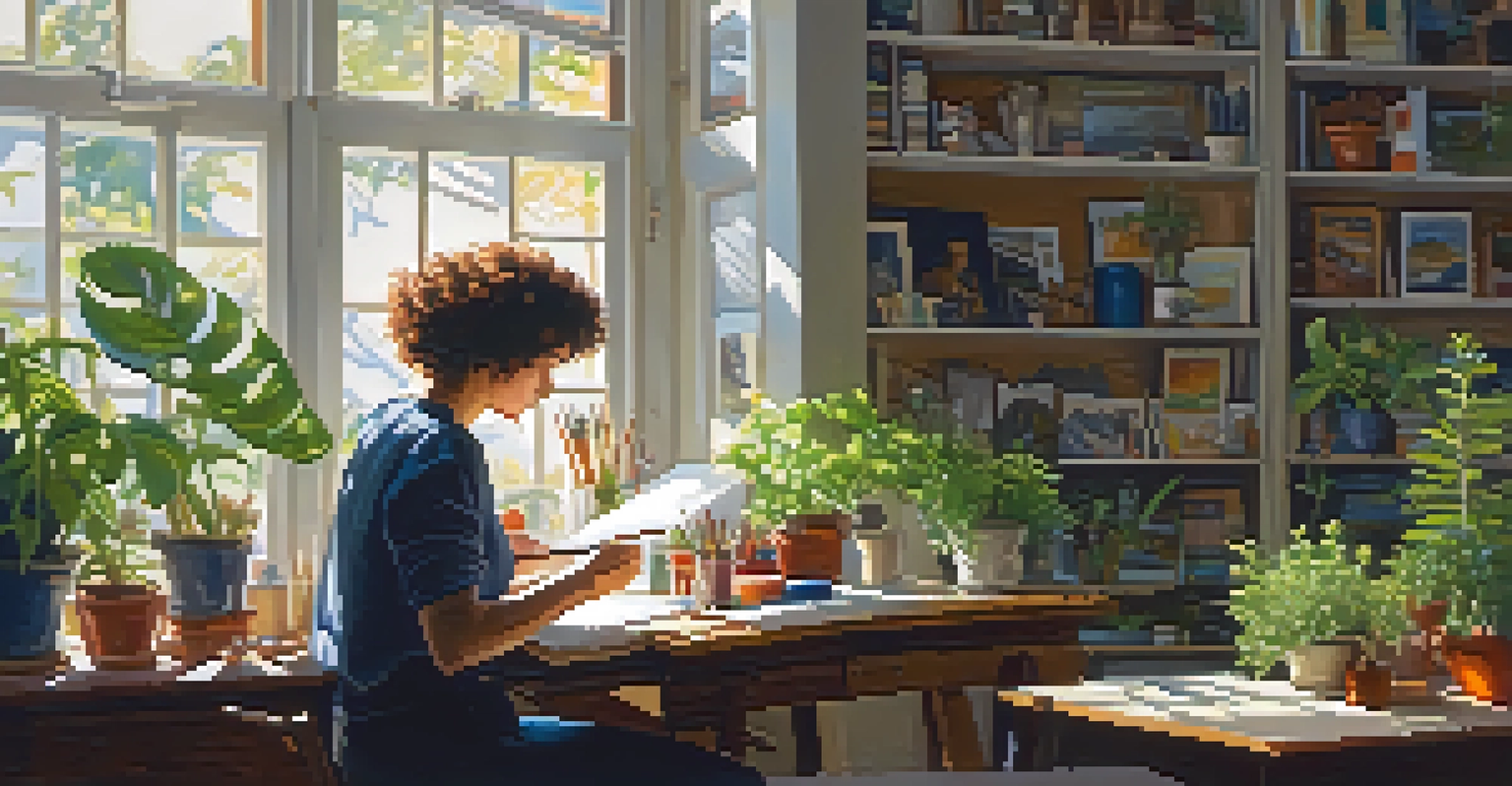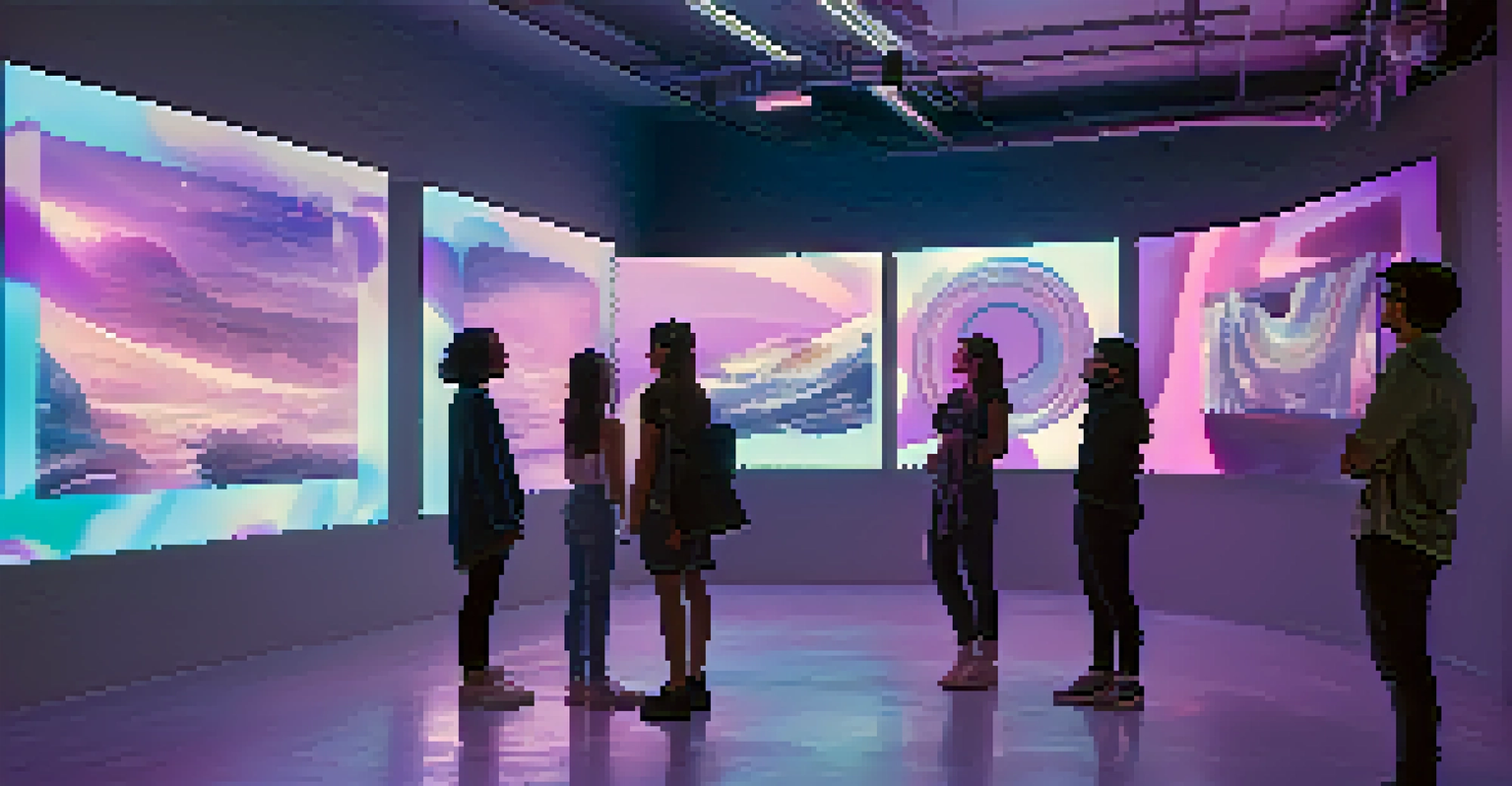Digital Art Communities: Connecting Artists Worldwide

The Rise of Digital Art Communities in the Online World
In recent years, digital art communities have flourished online, providing a platform for artists from all walks of life. These communities, ranging from social media groups to dedicated art platforms, allow creators to showcase their work and connect with like-minded individuals. With the advent of technology, artists no longer feel isolated; they can share their passion with a global audience.
Art is not what you see, but what you make others see.
For instance, platforms like DeviantArt and ArtStation have become hubs for artists to display their portfolios and receive feedback. This shift has transformed how art is shared and appreciated, breaking geographical barriers and fostering a sense of belonging. Through these communities, artists gain visibility, which can lead to new opportunities, collaborations, and friendships.
Related Resource
Ultimately, the growth of digital art communities reflects a broader trend towards inclusivity and collaboration in the art world. It's not just about sharing art; it's about building relationships and finding inspiration in the diverse creativity that exists around the globe.
Benefits of Joining Digital Art Communities for Artists
Joining digital art communities offers numerous benefits for artists, both emerging and established. One of the most significant advantages is the access to constructive feedback from peers, which can help improve skills and refine artistic vision. Engaging with other artists also promotes a sense of accountability and motivation, pushing individuals to create more frequently.

Moreover, these communities often host challenges, contests, and collaborations that spark creativity and offer opportunities for exposure. For example, many platforms encourage artists to participate in themed challenges, which can lead to increased visibility and even potential commissions. By participating, artists can expand their audience and showcase their unique styles.
Digital Art Communities Thrive Online
Online platforms are enabling artists to connect, share their work, and gain visibility in a global digital landscape.
Additionally, digital art communities provide resources and tutorials that can be invaluable for learning new techniques or software. Whether it's a beginner seeking to grasp the basics or an experienced artist looking to master a new tool, these communities are rich with knowledge and support.
How Digital Art Communities Foster Collaboration
Collaboration is a cornerstone of many digital art communities, enabling artists to work together on projects that celebrate their collective talents. This collaborative spirit can lead to innovative works that may not have been possible individually. For instance, an illustrator might team up with a writer to create a graphic novel, blending their skills to produce something truly unique.
Creativity takes courage.
Moreover, collaborations often result in cross-promotion, as artists share their joint efforts with their respective audiences. This not only amplifies their reach but also nurtures a sense of camaraderie among community members. By working together, artists can learn from each other and push the boundaries of their craft.
Related Resource
Such collaborative projects also help in building friendships that extend beyond the digital realm. Many artists have found lifelong friends through these partnerships, demonstrating that the connections formed in these communities can be both professional and personal.
Diversity and Inclusivity in Digital Art Spaces
Digital art communities are remarkably diverse, welcoming artists from various backgrounds, cultures, and skill levels. This diversity enriches the artistic landscape, allowing for a plethora of styles, techniques, and perspectives. When artists share their unique stories and experiences, they contribute to a broader understanding of art as a universal language.
Furthermore, many communities actively promote inclusivity by creating safe spaces for underrepresented artists. These initiatives encourage participation and visibility, ensuring that everyone's voice is heard and valued. For instance, platforms may feature spotlight events for LGBTQ+ artists or artists of color, amplifying their work within the community.
Collaboration Boosts Artistic Growth
Working together in digital art communities fosters innovative projects and builds lasting relationships among artists.
Ultimately, the commitment to diversity and inclusivity strengthens digital art communities and fosters an environment where creativity can thrive. As artists connect with one another, they cultivate an appreciation for different viewpoints, which can lead to innovative collaborations and inspiring works.
Navigating Challenges in Digital Art Communities
While digital art communities offer numerous benefits, they are not without challenges. For example, artists may face issues such as negativity, critique that crosses into harsh territory, or even harassment. It’s essential for community members to establish guidelines and promote positive interactions to create a supportive environment.
Another challenge is the overwhelming amount of content shared daily, which can make it difficult for individual artists to stand out. This saturation can lead to feelings of discouragement or inadequacy among artists striving for recognition. To combat this, artists should focus on honing their unique styles and engaging authentically with their audience.
Related Resource
Additionally, maintaining a balance between online engagement and personal well-being is crucial. Artists should remember to take breaks from social media to avoid burnout and to focus on their craft. By addressing these challenges, digital art communities can continue to be a positive, enriching space for artists.
The Role of Social Media in Art Communities
Social media has played a pivotal role in the evolution of digital art communities, acting as a bridge that connects artists to a broader audience. Platforms like Instagram, Twitter, and TikTok have become essential for artists to share their work, showcase their processes, and interact with fans and fellow creators. This visibility can lead to opportunities that might not have been accessible through traditional means.
Moreover, social media allows for real-time engagement, making it easier for artists to receive immediate feedback and support. This instant connection can be incredibly motivating, as artists see their work resonate with others. It's not just about showcasing finished pieces; artists can share their creative journeys, which often fosters a deeper connection with their audience.
Navigating Challenges is Key
While digital art communities offer support, artists must address issues like negativity and content saturation to thrive.
However, it's essential for artists to navigate social media mindfully. The pressure to constantly create and share can be overwhelming, so it's important to prioritize personal creativity over the quest for likes and shares. By focusing on authentic engagement rather than metrics, artists can cultivate a more fulfilling experience within these digital spaces.
Future Trends in Digital Art Communities
As technology continues to evolve, digital art communities are likely to undergo significant transformations. One potential trend is the rise of virtual reality (VR) and augmented reality (AR) in art sharing. Imagine attending a virtual gallery opening from the comfort of your home or collaborating with artists across the globe in a shared digital space. This technology could redefine how we experience and share art.
Additionally, the growing interest in NFTs (non-fungible tokens) highlights a shift in how artists monetize their work. Digital art communities may adapt to these changes by offering new platforms and resources for artists to explore this emerging market. By embracing these innovations, artists can find new ways to connect with audiences and generate income.

Ultimately, the future of digital art communities is bright, filled with opportunities for artists to connect, collaborate, and thrive. As we move forward, it's essential for these communities to remain inclusive and supportive, ensuring that everyone has a place to express their creativity.